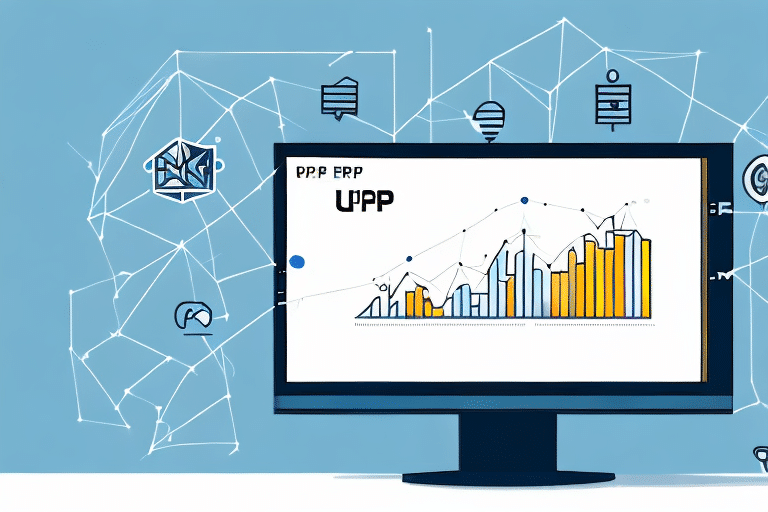Importance and Benefits of UPS Integration with FinancialForce ERP
Integrating UPS into your FinancialForce ERP system offers numerous benefits that can significantly enhance your business operations. Firstly, it enables automation of shipping processes by synchronizing data between your financial system and shipping provider, saving time and reducing errors. According to a Forbes Tech Council report, businesses experience up to a 30% reduction in shipping errors post-integration.
Additionally, real-time access to shipping rates improves decision-making and leads to cost savings. With the ability to track shipments directly from FinancialForce ERP, you gain better visibility over the entire shipping process, enhancing both operational efficiency and customer satisfaction.
Connecting and Configuring UPS with FinancialForce ERP
Setting up UPS integration with FinancialForce ERP involves several key steps to ensure seamless operation:
Step-by-Step Connection Process
- Create a UPS Account: Start by signing up for a UPS account and obtaining access to their API.
- Establish the Connection: Within your FinancialForce ERP system, navigate to the integration settings and create a new connection for UPS.
- Configure Settings: Input necessary API credentials and configure data synchronization settings to ensure accurate data flow between systems.
- Test the Integration: Before going live, conduct thorough testing to confirm that shipments can be created, tracked, and managed effectively.
Best Practices for Configuration
- Design efficient workflows to streamline shipping processes.
- Carefully map data fields to maintain synchronization accuracy.
- Implement security measures such as data encryption and user permissions to protect sensitive information.
- Regularly update integration settings to accommodate any changes in UPS APIs or FinancialForce ERP updates.
Optimizing and Managing Shipping Processes
To maximize the benefits of UPS integration with FinancialForce ERP, it’s essential to optimize your shipping workflows:
Workflow Design and Automation
Implementing automated label creation, remote printing, and advanced pick-up scheduling can significantly reduce shipping times and costs. For instance, automated label creation can cut down processing time by up to 20%, as noted by Supply Chain Digital.
Data-Driven Decision Making
Utilize data analytics to identify patterns in your shipping data. Analyzing metrics such as packaging time and shipping costs allows you to refine processes and select the most cost-effective shipping methods for different product types.
Enhancing Customer Experience
Providing accurate tracking information and timely deliveries enhances customer satisfaction. Streamlined shipping processes ensure order accuracy and faster delivery times, fostering customer loyalty.
Advanced Features and Analytics
The integration between UPS and FinancialForce ERP unlocks advanced features that offer deeper insights into your shipping operations:
Real-Time Tracking and Monitoring
Gain real-time visibility into shipment statuses, allowing for proactive management of any delays or issues. This transparency helps in providing accurate delivery estimates to customers.
Reporting and Analytics
Access comprehensive reports on shipment volumes, delivery times, and shipping costs. Leveraging these analytics enables businesses to identify performance trends and areas for improvement. Tools like data analytics platforms can further enhance your ability to make informed decisions.
Overcoming Challenges and Enhancing Customer Experience
While integrating UPS with FinancialForce ERP offers significant advantages, businesses may encounter challenges that need to be addressed:
Common Integration Challenges
- Lack of technical expertise in API development.
- Complex data mapping requirements between systems.
- Difficulties in optimizing shipping processes to align with business needs.
Partnering with experienced IT professionals or consulting firms can help mitigate these challenges, ensuring a smooth integration process.
Enhancing Customer Experience
Seamless shipping integration leads to improved order accuracy and faster delivery times. By providing customers with real-time tracking and transparent shipping information, businesses can boost customer satisfaction and loyalty.
Partnering with a Trusted Shipping Provider
Collaborating with a reliable shipping provider like UPS offers numerous benefits:
- Access to a global shipping network, facilitating international expansion.
- Advanced reporting and analytics tools to monitor shipping performance.
- Dedicated customer support services to assist with any shipping issues.
UPS’s robust API integrates seamlessly with FinancialForce ERP, reducing shipping errors and streamlining operations.
Case Studies: Successful Implementation of UPS and FinancialForce ERP Integration
Numerous businesses across various industries have successfully integrated UPS with FinancialForce ERP, leading to enhanced efficiency and cost savings. For example, a mid-sized e-commerce company reported a 25% decrease in shipping costs and a 40% improvement in delivery times after implementing the integration. These case studies demonstrate the tangible benefits and provide valuable insights for other businesses considering similar integrations.
Future Trends and Innovations in Shipping Technologies
The shipping industry is continually evolving with advancements in technology. Future trends that will impact businesses using FinancialForce ERP include:
Artificial Intelligence and Machine Learning
AI and ML can optimize routing, predict delivery times more accurately, and enhance overall shipping efficiency.
Blockchain for Supply Chain Transparency
Blockchain technology offers secure and transparent tracking of shipments, reducing fraud and improving trust in the supply chain.
Internet of Things (IoT) Enabled Devices
IoT devices provide real-time data on shipment conditions, such as temperature and humidity, ensuring the integrity of sensitive goods during transit.
Staying abreast of these technological advancements will help businesses plan effectively and maintain a competitive edge in the market.
In conclusion, integrating UPS with FinancialForce ERP can deliver significant benefits, including cost savings, improved efficiency, and enhanced customer satisfaction. By following best practices and leveraging advanced features, businesses can optimize their shipping operations and thrive in a competitive marketplace.






















